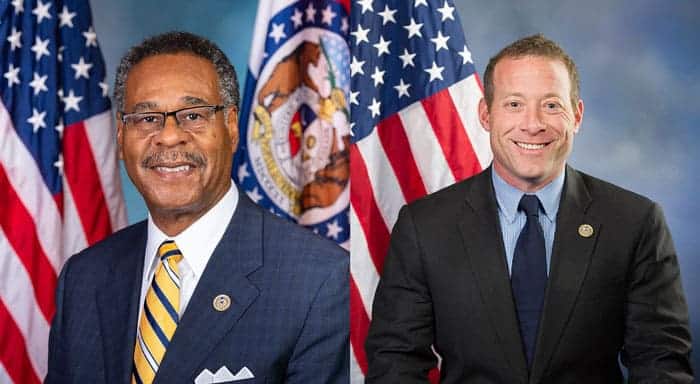In this issue
- Blockfolio and FTX crypto exchange merge in mega deal
- Reps. Gottheimer and Cleaver demand answers for terrorists’ crypto accounts
- Japan’s finance minister champions blockchain
- In China: Inner Mongolia raises crypto mining costs. Blockchain Service Network splits into separate mainland and international versions
- Funding spotlight: New digital payment platform in S. Korea
From the Editor’s Desk
Dear Reader,
Lots on our radar this week on The Current Forkast. As I search for a common thread to share with you here, on the theme that encapsulates what’s happening, one word comes to mind: maturity.
On one hand, the U.S. Justice Department’s seizure of crypto-funds from terrorists shows this space is being policed and cleaned up. No one wants to support bad actors, period. On the other hand, Japan is looking to increase its blockchain collaboration, notably for its own central-bank backed digital yen. Days before Prime Minister Shinzo Abe’s resignation, Finance Minister Taro Aso’s comments about the national need to collaborate with the blockchain sector became a point of international interest. As the 79-year-old right-hand man of Abenomics, Aso — who also serves as Japan’s deputy prime minister — could become the country’s chief steward until elections take place in 2021.
In the scant space of two years, notice how different blockchain and cryptocurrency issues are being parsed by leaders and authorities. From “what the heck is this?” attitudes back in 2017 to “it is here to stay” sensibilities of 2020, blockchain acceptability is only gaining ground. Cryptocurrency is an asset. Use cases are being explored. And The Current Forkast notes that the current climate for blockchain and cryptocurrency is warming.
Until the next time,
Angie Lau,
Founder and Editor-in-Chief
1. Blockfolio joins with FTX in blockbuster deal

By the numbers: Blockfolio — over 5,000% increase in Google search volume.
A mega M&A deal has swept through the crypto industry as Hong Kong-based crypto derivatives exchange FTX announced its US$150 million acquisition of Blockfolio, a portfolio tracker. While Blockfolio has been downloaded by more than 6 million users, FTX has a US$750 million trading volume.
- FTX and Blockfolio also announced that the two will be collaborating to launch a “unique Blockfolio retail trading experience” this fall.
- The announcement of FTX’s expansion comes after the launch of Serum, a Solana-based non-custodial decentralized exchange. Solana is a layer 1 proof-of-stake blockchain that can support up to 65,000 transactions per second.
Forkast.Insights | What does it mean?
FTX is one of the new kids on the block(chain), taking advantage of the growing interest in cryptocurrency derivatives. However, it’s not as noisy as its rival derivatives exchange BitMEX, or as large as exchanges such as Binance that have entered the derivatives market. This is largely because FTX targets a quiet, professional crowd of quants and pro-traders.
And this is why the acquisition of Blockfolio makes perfect sense: it’s a mobile-first platform that targets the retail investors with pricing, news and market data. Think of it as a mini-Bloomberg for traders. At the same time, in the past year FTX has launched products with a more retail focus, such as a futures market for the 2020 U.S. Presidential election, which currently give Trump a slight edge over the national aggregated polls from 538. FTX has also launched trading products for the traditional commodities market such as oil.
The tie-up potential is enormous. FTX not only has “buy the top of the funnel,” to bring in someone looking for pricing data on a particular token, but it also has the bottom too: once the person buys and logs in, they will be looking at a hybrid of the two products. A syndicated news story on Blockfolio could be augmented by FTX pricing data, and inversely FTX trading data could drive insights and analysis on blockfolio.
Given how the derivatives market is nowhere nearly as large as the general crypto commodities market, and FTX doesn’t have the same commanding market share as Binance, this won’t attract the same scrutiny as Binance’s acquisition of CoinMarketCap.
This deal ranks within the 10 largest in the history of the crypto industry (all of which involve a trading platform of some sort), which goes to show the continued interest in trading platforms as the retail trading market continues to expand — and the quality of assets becoming institutional grade.
2. Seeking sunshine on terror financing

By the numbers: Josh Gottheimer and Emanuel Cleaver — 5,000% increase in Google search volume.
U.S. Democrats Josh Gottheimer and Emanuel Cleaver have requested the Trump administration to elaborate on “the largest ever seizure of terrorist organizations’ cryptocurrency accounts.”
- “It is vital that Members of the Subcommittee on National Security, International Development and Monetary Policy receive a briefing, at the appropriate classification level, on this action, the largest ever seizure of online terrorist financing, from the Department of Justice, the Department of the Treasury on this investigation,” the lawmakers penned. “In addition, we respectfully request Treasury provide an assessment of how it is working to proactively confront and curtail these malign actors within our financial networks.”
- The Justice Department’s announcement three weeks ago the dismantling of three terrorist financing cyber-enabled campaigns, seizing millions of dollars across 300 crypto accounts.
Forkast.Insights | What does it mean?
Despite major efforts by industry stakeholders to apply “know your customer, anti-money laundering (KYC/AML) and counter-terrorist financing rules, cryptocurrency is still the preferred method for capital formation for terrorists. From this, a whole industry of crypto-analytics software suites have emerged such as Coinbase Analytics and Chainalysis to aid law enforcement’s investigative efforts. On the regulatory side, the Financial Action Task Force has drafted recommendations that would effectively strip away the layer of anonymity for transactions over $1,000.
Although the hardcore libertarian core of the Bitcoin community believes that total anonymity is sacrosanct — an undeniable right — the reality on the ground with those that want to help evolve crypto into an institutional grade asset is that compliance is a necessity and total anonymity doesn’t enhance the quality of the asset.
“It is important to understand that privacy does not mean anonymity. For example, bank details are private but my bank knows who I am,” Malcolm Wright, chief compliance officer at Hong Kong-based fintech and blockchain solutions firm Diginex, told Forkast.News in an earlier interview. “More importantly, the measures will help secure the financial system, preventing financial crime and other illicit activities such as sanctions evasion or even proliferation of nuclear weapons… FATF’s recommendation 16 does not affect the decentralized nature of cryptocurrencies.”
In the early 2000s, terrorist organizations used PayPal to fundraise. But regulations were quickly put in place to deter this, and PayPal fully complied, booting the bad actors off the platform. They, along with money launderers and other crooks migrated over to services like LibertyReserve — an anonymous digital currency exchange where people could set each other fiat-pegged Liberty Dollars or euros (essentially stablecoins) with only an email address. The company’s founder was arrested in 2016 on money laundering charges.
The reality is there’s not really much precedent for a totally anonymous digital money transfer service. For obvious reasons: it would be exploited by criminals and tax evaders. Crypto is evolving into an institutional-grade commodity, and with that comes regulatory compliance. This just simply isn’t compatible with total anonymity.
3. Japan’s finance minister urges cooperation on blockchain

By the numbers: Taro Aso — 5,000 % increase in Google search volume.
Deputy prime minister of Japan Taro Aso has urged the nation’s blockchain sector for cooperation during the Blockchain Global Governance Conference. During the conference, Aso, who also currently juggles another job as the country’s finance minister, suggested that the privacy brought on by blockchain can help improve contact tracing in battling widespread infectious diseases.
- Aso also urged the blockchain community and Japanese regulators to address issues between the two parties for regulations to progress. Although Japan had been one of the earlier adopters of cryptocurrency regulations, landmark hacks such as 2018’s Coincheck hack, drove regulators to implement stricter KYC measures. The blockchain industry, however, has criticized this move for hindering growth and adoption.
- “Taro Aso,” however, is trending for another reason. As Prime Minister Shinzo Abe resigned from his position over health concerns, Aso was thought of as one of the leading candidates to replace Prime Minister Abe but has signaled that he doesn’t intend to join the race at this time.
Forkast.Insights | What does it mean?
While the United States now seems to have a trifecta of crypto-friendly regulators at the top, this isn’t the case in Japan. The country is known for its conservative regulatory regime, and the country isn’t exactly a FinTech hub. One of the earliest major scandals in the short history of Bitcoin, the collapse of Mt. Gox, happened on Japanese soil, filing for bankruptcy in a Tokyo court. Finance Minister Aso seems to share this opinion: in response to the collapse of Mt. Gox, Aso is quoted by the Financial Times as saying that he believed the exchange “wouldn’t last long” and would “fail somehow.” In 2017 Reuters quoted him as saying that Bitcoin is not yet proven to be a credible currency.
But what has caught the minister’s eye is the potential of distributed ledger technology (remember: it’s blockchain’s cousin, not the same thing) and central bank digital currencies as a tool to bolster the yen’s international standing. Authorities in Japan have gone on record and said it would be a “very serious problem” if China’s digital currency, DCEP (Digital Currency Electronic Payments) takes off and the e-RMB becomes a preferred method of international settlement that gives China a pathway to becoming an economic hegemon. This very real possibility will get the country to abandon its phobia of fintech and innovation and work on a solution to counter DCEP. As a finance minister, this would be Aso’s second legacy after Abenomics, and it might be seen as the first step in bringing back Japan as the economic hub of yore.
4. In China: Inner Mongolia raises costs for crypto farms; BSN forks to separate mainland from non-Chinese users

Crypto mining farms in Chinese Inner Mongolia may not enjoy the preferential electricity prices anymore, as the local government removed the qualification for crypto mining farms to join the region’s electric power multilateral trading scheme. This could raise electricity rates by nearly a third for affected crypto mining firms.
- Inner Monglia’s Ministry of Industry and Information Technology (MIIT) announced on August 24th that it noticed 21 out of 30 technology firms, in inner Mongolia, to be crypto mining firms, that aren’t qualified to join in the electric power multilateral trading market.
- Inner Mongolia, an autonomous region in northern China, is rich in coal resources, which provides relatively cheap electricity rates. The region’s cold climate also provides favorable conditions for operating mining machines, which require costly cooling systems to boost their efficiency.
Forkast.Insights | What does it mean?
Bitcoin mining farms in China, with their massive scale and enormous demand for electricity, are looking for a home base beyond Sichuan. While there has always been a certain migratory nature to the facilities, as Sichuan’s cost-per-kilowatt is at the lowest during the rainy season, the increasing intensity of the rainy season — to the point where it’s causing widespread damage — means the industry wants a new base of operations. China’s north has cheap coal, and, according to one recent study, Xinjiang might already be the larger mining hub than Sichuan during the non-rainy season.
But as cheap as coal power is, it’s not as cheap nor plentiful as hydro. Miners cluster in Sichuan because of overdeveloped power generating infrastructure and favorable geography that brings down electricity costs to as low as they can be. Because of the geography and rainy weather, electricity is effectively infinite. But coal is not, and while Inner Mongolia has subsidized the cost of electricity to bring industry to an otherwise barren arctic terrain, the mining industry can’t have it all.
Ultimately, it might be more profitable for the industry — and better for the planet, too — if crypto farms wean themselves from dirty coal and relocate to regions that offer inexpensive clean energy, such as hydropower. There is a reason why the industry likes to cluster around hydropower-rich regions like Sichuan — its propensity for floods notwithstanding — as well as Canada’s Quebec and British Columbia. More industry reliance on clean power would undercut other research showing Bitcoin to be an environmental disaster. Migrating to areas like Inner Mongolia or Xinjiang may make sense in the short term, but hydropower is still the cheapest, cleanest and — in this increasingly political world — perhaps the smartest source of energy for crypto mines out there.

China’s state-backed Blockchain-based Service Network (BSN) is preparing for a major update on October 31, with distinct differences in focus between BSN China and BSN International.
- BSN International will further expand its permissionless blockchain frameworks from six public chains including Ethereum, NEO, Nervos into nine, and up to 15 public chains for users to access.
- BSN China will be focused on commercializing XuperChain, the blockchain project launched by China’s search engine giant, Baidu. Local media reports that XuperChain has met all of the Chinese government’s required standards of blockchain, such as mandating all customers to submit proof of identification to use the blockchain services.
Forkast.Insights | What does it mean?
The plan to use the BSN as a virtual bridge between east and west while supporting various Western blockchain networks was always a bit too ambitious for reality. China’s rules about encryption and tradeable tokens mean that the majority of international blockchain platforms would simply not be allowed in the country. And BSN’s state-backed partners —the country’s largest banks and telcos — also pushed back, nervous about integrating blockchain platforms that were specifically banned in-country into the national infrastructure network.
BSN still has ambitious plans for expansion and becoming an agnostic platform with global reach. However, it won’t exactly be the digital bridge as it was initially thought to be — unless you are using a blockchain developed in China like XuperChain. So less bridge, perhaps, and more of a funnel to export technology.
5. Funding spotlight: Fintech in South Korea
Toss — Series G, South Korea, US$173 million
South Korea’s Viva Republica has received $173 million in capital funding for its “mobile finance platform” Toss, in a funding round led by VC subsidiary Sequoia Capital China. This brings the cumulative funding for the fintech startup to $434.2 million. In a press release, Co-founder Seunggun Lee stated that the funds will be used for “building a super app fundamentally innovating across every facet of consumer finance.” App users today can manage their credit, transfer funds with other users and view their aggregated finances. The firm plans to operate a digital bank in 2021.
Online statistics hub Statista published a report on Korea’s digital payments system, noting the year-over-year growth of digital payments and mobile POS payments to be 9%. The site maintains that user penetration in digital payments stands at 24.4% in 2020, much higher than comparable Western markets. The report accounts for the projected impact of Covid-19
Forkast.Insights | What does it mean?
Growth in the digital payments sector is driving a wide share of startup funding in the APAC region, but the saturation of the market may become an issue as startups compete with one another. What’s unclear is why major banks, especially those on Wall Street, haven’t been nearly as competitive as homegrown finance. While Bank of America and Goldman Sachs have made respective investments in proprietary and startup solutions, these haven’t made great strides in the APAC region. Are we at peak digital bank? Has investor interest created a bubble that’s not sustainable? Time will tell once these startups burn through their funding rounds and need to be profitable. In Europe, these challenger banks and payment solutions, like Revolout, are struggling to turn a profit. Let’s see if that’s different in Asia.




